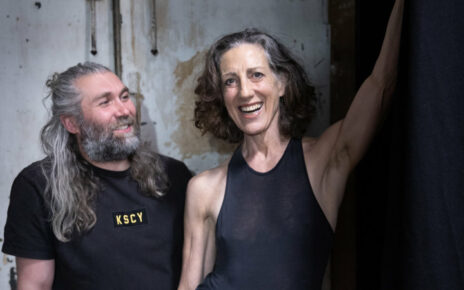Is your orgasm a wave, an avalanche or a volcano? TRACEY COX reveals the three different types (and the techniques you need to experience them all!)
- UK sex expert Tracey Cox shares top tips on achieving different orgasm types
- READ MORE: Scientist reveals why women climax less than men during sex
An orgasm is an orgasm, right? It feels the same for everyone.
Turns out that assumption is wrong: orgasms differ from person to person.
It’s a bit like playing Pictionary. One person’s idea of a horse is totally different to another person’s – yet you’re both astonished you don’t draw and picture it the same way.
A recent study by neuroscience professor, Dr James Pfaus of Charles University, Prague, identified three types of orgasm: the wave, avalanche and volcano.
He asked 54 women to use a vibrator which detects the force of pelvic floor contractions and bring themselves to orgasm over several days. The vibrator – a pelvic floor biofeedback instrument – was rather aptly called the Lioness.
A recent study by neuroscience professor, Dr James Pfaus of Charles University in Prague, identified three types of orgasm: the wave, avalanche and volcano. Stock image used
Research on how women experience orgasm is scant but the little that has been done suggests we’re more individual than we are alike.
It might be that we are genetically programmed to only experience orgasm a certain way.
But if you’re, like me, intrigued to expand your repertoire, here’s some tips that might just send you on a road less travelled.
RIDE ‘THE WAVE’
Nearly 50 per cent of the women in the study had this type of orgasm – a series of successive contractions or undulations with tension released when they climax.
How to have one:
The key to experiencing the most common type of orgasm probably lies in focusing on the two factors that most predict an orgasm will happen: repetition and rhythm.
While it’s great to experiment with different techniques during the arousal stage, it’s crucial to keep doing whatever it is you’re doing the closer you get to the finish line. Switch technique when you’re minutes or seconds away and chances are you’ll miss the orgasm completely. Plummet to the bottom of the arousal scale rather than shoot to the top.
UK sex expert Tracey Cox – pictured – shares her top tips on achieving the different types of orgasm
If you’re out to impress a woman, the way to do it isn’t to show off how many techniques you’ve mastered. It’s knowing when to stick with the one she’s enjoying.
Mix things up:
Try a new technique for at least two minutes. It takes a while for our body to respond and decide if it likes something or not. Stimulation that starts out as irritating can move into intense pleasure with repetition.
Switch styles by forcing yourself to change your preferred method. If you prefer a slow burn and like things soft and slow, switch to firmer, faster stimulation for a minute or two now and then, then slow it down again. (Just make sure you do it early in the arousal stages rather than on the approach to orgasm.)
If you’re up for a drastic change in intensity, try the opposite style of stimulation you’re used to, maintaining it all the way through.
THE RECIPE FOR YOUR PERFECT ORGASM
Like most recipes, it’s a case of trial and error before you stumble on your favourite orgasm triggers.
These are the factors to experiment with.
The ingredients: pressure, speed, body parts (tongue, fingers, penis), vibration (using a toy).
The serving size: some women need an hour to become aroused enough to orgasm, others can go from zero to take-off in minutes. (Vibration produces the fastest results.)
The method: Try a combination of techniques – a tongue with a finger inside, a butt plug inserted before having intercourse. Double stimulation also speeds up an orgasm.
EXPERIENCE ‘THE AVALANCE’
This orgasm starts with tension at its highest before orgasm, which then lowers once you’ve climaxed.
Seventeen per cent of the women experienced orgasm avalanche style.
How to have one:
One way to influence your orgasm style is to change how directly you’re stimulating the clitoris – and which part you’re stimulating.
A little anatomy lesson to explain: The part of the clitoris you can see is just the tip: the glans. It’s the area with the most nerve endings and extremely sensitive to touch. The body of the clitoris is hidden. There are two ‘legs’ that split in half to form bulbs that extend down the sides of the labia. These bulbs also contain erectile tissue that swells with blood during sexual arousal to increase lubrication and sensation.
You need stronger, firmer pressure to stimulate the bits of the clitoris hidden below the skin because there’s an extra layer on top.
Some women prefer to achieve orgasm through direct stimulation of the tip of the clitoris; others climax through indirect stimulation of the ‘inner’ body. Switch it up and you’re likely to experience orgasm a different way.
Vary the sensation:
If you’re used to direct stimulation…
Turn down the intensity dial by avoiding direct stroking of the glans. Instead, cup your hand around the whole vulva and move it up and down and side to side. (You’re using the lips or ‘labia’ as a friction tool.) Also try grinding against a pillow or the side of the sofa or lying on your stomach to add pressure as you use the cupping technique.
Instead of using a finger or sex toy, focus on the gentler simulation of a tongue by oral sex. Or try for front wall stimulation (the bit under your tummy) by choosing a position which allows his penis to stimulate the home of the ‘G-spot’.
If you’re used to indirect stimulation…
Go back to an old favourite: circling the clitoris with a finger is still the go-to technique for a reason. It’s effective.
Use the pad of a finger to move the clitoral hood (the fold of skin that protects the clitoris) in a circular motion around the clitoris. Use lots of lube and keep the pressure light and the circle ‘big’ to begin with.
Then increase the pressure and make the circle smaller and more focused on the glans as arousal builds.
The tip you’ve heard before – to spell out the letters of the alphabet with your finger or tongue – is still doing the rounds because it’s a good way to ensure you’re reaching all areas of the clitoris. This not only helps stop over sensitisation, it helps to discover which part of your clitoris most enjoys a particular type of touch.
Which might well lead you to this type as well…
THIS IS WHAT MY ORGASM FEELS LIKE
I asked women to describe their orgasms. Here’s some of their responses.
Olivia, 34, has been married for two years
‘I have vaginal and clitoral orgasms and they are very different. If I have an orgasm through penetration, an aching feeling builds and then peaks, spreading into mild, pleasurable waves which I feel deep inside. My vagina seems to spasm, but less fiercely than with a clitoral orgasm. Vaginal orgasms affect a larger area – like waves of pleasure are crashing all over my body. Clitoral orgasms all radiate from the clitoris. They’re more a euphoric explosion, an eruption.’
Aisha, 23, is single
‘I can masturbate to a clitoral orgasm within a few minutes but I need to know and relax with a partner before he can give me one. That’s because I have to concentrate, block him out of the picture and focus entirely on the sensation. I have to focus on me, not him. I hate it if men try to talk to me when I’m trying to orgasm. It breaks my concentration and I end up not having one at all.’
Helen, 28, is gay and in a long-term relationship
‘Oral sex orgasms are the best: really intense, strong and powerful. When she starts, I feel incredibly sensitive and everything feels great. The sensation then becomes sharper and isolates around the clitoris. It almost feels like the rest of my body disappears and all that’s left is that tiny little area. Like if someone chopped my arm off, I wouldn’t notice! All I’m aware of is what’s happening to that centimetre or less of flesh.’
CREATE A ‘VOLCANO’
As the name suggests, this orgasm is more explosive. It starts with lower pelvic floor tension which then suddenly builds and releases at the point of orgasm.
It’s the least common type with only eleven per cent of the women experiencing this.
How to have one:
Another deciding factor in the type of orgasm you experience is your unique biological makeup.
All clitorises are different because there isn’t a set number of nerve endings in the clitoris. Recent research suggests the number of nerve endings ranges from ten to eleven thousand (up on the eight thousand previously touted) but we’re all individual in how many we got and where they end up.
This is why there is no one ‘best way’ to stimulate the clitoris. It all depends on where your nerve endings are individually concentrated. They might be densest at the top or bottom of the glans, for others they’re more heavily weighted on one side or another
This is why the most tentative touch in a certain spot is too much for one woman but perfect for another.
Find your best side:
These techniques will help pinpoint intensity. But don’t be surprised to find that your ‘bulls-eye’ changes. Stress, your menstrual cycle, how aroused you are – all will affect the intensity your body craves.
Use the clock technique. It’s a simple, fool proof way to figure out (and guide your partner) to the area/s most and least sensitive for you.
Imagine a clock face surrounding your vulva. The clitoris, at the top (nearest your belly), is 12 o’clock and the opening to the vagina (down the bottom) is 6pm. If something feels good midway, it’s at three o’clock or nine o’clock (etc).
Experiment solo, using a vibrator or your fingers, making a mental note of which area feels best for you, at different levels of arousal. Or let your partner do the work while you report back.
The clock technique is especially useful during oral sex. Much easier to say ‘Go back to four o’clock!; than do the whole ‘up a bit, down a bit’ thing if they veer away from your personal pleasure area.
Use the Kivin method. This is basically oral sex performed sideways so it focuses on a particular side of the clitoris. Instead of lying between your legs, your partner lies perpendicular, so your bodies form a T-shape.
Not only is the tongue focusing directly on one side, it’s moving in a side-to-side motion rather than up and down.
Another way to change your orgasm style is to use sex toys. You’ll find Tracey’s range of products – Tracey Cox Supersex (for couples) and Tracey Cox Edge (for men) – at lovehoney.co.uk.
Source: Read Full Article




